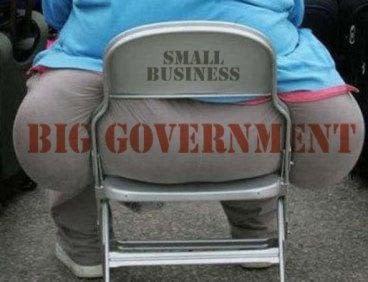(Remember, the same people that tell us there is more than two sexes and that we can change the planets temperature are now telling us the best way to reach herd immunity is by as little contact as possible) I clipped this just to isolate the studies aspect of the presentation, the entire segment can be seen at FOX’S YouTube Channel here (it is worth watching). BTW, I watch segments from Cuamo, and Tapper at times to get another perspective (to test my own views). I sent the full segment of this Laura Ingraham clip to a friend, and even the mention of Fox News is considered “pot stirring.” If someone sent me an MSNBC clip or a CNN clip, I would not respond with such bias. What is funny is that these same people will go around and bemoan that our society is soo split right now, not realizing that they refuse to go out of their safe zone to even consider other points of views. In other words, their Leftism in labeling other ideas as “sexist, intolerant, xenophobic, homophobic, Islamophobic, racist, bigoted” as a way to reject even polite conversation is legend on the Left. I haven’t had cable for over 15-years, so I cannot watch any of this minus YouTube. But thank Gawd for Fox… while still a corporate entity, at least they offer a different opinion from MSNBC, CNN, ABC, BBC, CBS, NBC, NETFLIX, HULU, etc. — media and Hollywood.
There is no health crisis in California. Are we to break a Constitutional right to happiness (make a living, own land, a business) every flu season?
CALIFORNIA FLU DEATHS
- 2018: 6,917
- 2017: 6,340
- 2016: 5,981
- 2015: 6,188
- 2014: 5,970
- 2005: 7,553
Corona deaths are at least 25% lower than reported number, I argue well for even lower. So with the safe Birx and states that have gone through their numbers… there are a total of 5,696 deaths (7,595 official as of now) in California. See more:
- Funny Covid-19 Numbers By Date (Why Many Are Skeptical)
- 1st Colorado and Washington, Now Texas Reduces Covid Deaths
- Infection Fatality Rate Percentages of The Wu Flu (Updates)
[Facebook’s] so called “fact checkers” have struck again, claiming that my report on the science that proves that wearing facemasks, especially in non-medical settings does almost nothing to prevent the spread of a virus, is false… citing that it was based on old information. Now, I’m reporting on a new study created in conjunction with the World Health Organization and published by the CDC from less than 60 days ago that once again proves that there is no evidence that wearing face masks in public prevents the spread of flu-like viruses. I’m also going to show you why the Facebook fact-checking system cannot be trusted. Link to the CDC published study. This study was conducted in preparation for the development of guidelines by the World Health Organization on the use of nonpharmaceutical interventions for pandemic influenza in nonmedical settings.
Here is the CDC STUDY: “Nonpharmaceutical Measures for Pandemic Influenza in Nonhealthcare Settings—Personal Protective and Environmental Measures”
ABSTRACT
There were 3 influenza pandemics in the 20th century, and there has been 1 so far in the 21st century. Local, national, and international health authorities regularly update their plans for mitigating the next influenza pandemic in light of the latest available evidence on the effectiveness of various control measures in reducing transmission. Here, we review the evidence base on the effectiveness of nonpharmaceutical personal protective measures and environmental hygiene measures in nonhealthcare settings and discuss their potential inclusion in pandemic plans. Although mechanistic studies support the potential effect of hand hygiene or face masks, evidence from 14 randomized controlled trials of these measures did not support a substantial effect on transmission of laboratory-confirmed influenza. We similarly found limited evidence on the effectiveness of improved hygiene and environmental cleaning.
[….]
METHODS
We conducted systematic reviews to evaluate the effectiveness of personal protective measures on influenza virus transmission, including hand hygiene, respiratory etiquette, and face masks, and a systematic review of surface and object cleaning as an environmental measure (Table 1). We searched 4 databases (Medline, PubMed, EMBASE, and CENTRAL) for literature in all languages. We aimed to identify randomized controlled trials (RCTs) of each measure for laboratory-confirmed influenza outcomes for each of the measures because RCTs provide the highest quality of evidence. For respiratory etiquette and surface and object cleaning, because of a lack of RCTs for laboratory-confirmed influenza, we also searched for RCTs reporting effects of these interventions on influenza-like illness (ILI) and respiratory illness outcomes and then for observational studies on laboratory-confirmed influenza, ILI, and respiratory illness outcomes. For each review, 2 authors (E.Y.C.S. and J.X.) screened titles and abstracts and reviewed full texts independently.
[….]
HAND HYGIENE
…The effect of hand hygiene combined with face masks on laboratory-confirmed influenza was not statistically significant (RR 0.91, 95% CI 0.73–1.13; I2 = 35%, p = 0.39)…
[….]
We further analyzed the effect of hand hygiene by setting because transmission routes might vary in different settings. We found 6 studies in household settings examining the effect of hand hygiene with or without face masks, but the overall pooled effect was not statistically significant (RR 1.05, 95% CI 0.86–1.27; I2 = 57%, p = 0.65) (Appendix Figure 4) (11–15,17). The findings of 2 studies in school settings were different (Appendix Figure 5). A study conducted in the United States (16) showed no major effect of hand hygiene, whereas a study in Egypt (18) reported that hand hygiene reduced the risk for influenza by >50%. A pooled analysis of 2 studies in university residential halls reported a marginally significant protective effect of a combination of hand hygiene plus face masks worn by all residents (RR 0.48, 95% CI 0.21–1.08; I2 = 0%, p = 0.08) (Appendix Figure 6) (9,10).
[….]
However, results from our meta-analysis on RCTs did not provide evidence to support a protective effect of hand hygiene against transmission of laboratory-confirmed influenza. One study did report a major effect, but in this trial of hand hygiene in schools in Egypt, running water had to be installed and soap and hand-drying material had to be introduced into the intervention schools as part of the project (18)…..
RESPIRATORY ETIQUETTE
Respiratory etiquette is defined as covering the nose and mouth with a tissue or a mask (but not a hand) when coughing or sneezing, followed by proper disposal of used tissues, and proper hand hygiene after contact with respiratory secretions (30). Other descriptions of this measure have included turning the head and covering the mouth when coughing and coughing or sneezing into a sleeve or elbow, rather than a hand.
[….]
….Respiratory etiquette is often listed as a preventive measure for respiratory infections. However, there is a lack of scientific evidence to support this measure. Whether respiratory etiquette is an effective nonpharmaceutical intervention in preventing influenza virus transmission remains questionable, and worthy of further research.
FACE MASKS
In our systematic review, we identified 10 RCTs that reported estimates of the effectiveness of face masks in reducing laboratory-confirmed influenza virus infections in the community from literature published during 1946–July 27, 2018. In pooled analysis, we found no significant reduction in influenza transmission with the use of face masks (RR 0.78, 95% CI 0.51–1.20; I2 = 30%, p = 0.25) (Figure 2). …. None of the household studies reported a significant reduction in secondary laboratory-confirmed influenza virus infections in the face mask group (11–13,15,17,34,35)….
[….]
Disposable medical masks (also known as surgical masks) are loose-fitting devices that were designed to be worn by medical personnel to protect accidental contamination of patient wounds, and to protect the wearer against splashes or sprays of bodily fluids (36). There is limited evidence for their effectiveness in preventing influenza virus transmission either when worn by the infected person for source control or when worn by uninfected persons to reduce exposure. Our systematic review found no significant effect of face masks on transmission of laboratory-confirmed influenza….
SURFACE AND OBJECT CLEANING
For the search period from 1946 through October 14, 2018, we identified 2 RCTs and 1 observational study about surface and object cleaning measures for inclusion in our systematic review (40–42). One RCT conducted in day care nurseries found that biweekly cleaning and disinfection of toys and linen reduced the detection of multiple viruses, including adenovirus, rhinovirus, and respiratory syncytial virus in the environment, but this intervention was not significant in reducing detection of influenza virus, and it had no major protective effect on acute respiratory illness (41). Another RCT found that hand hygiene with hand sanitizer together with surface disinfection reduced absenteeism related to gastrointestinal illness in elementary schools, but there was no major reduction in absenteeism related to respiratory illness (42). A cross-sectional study found that passive contact with bleach was associated with a major increase in self-reported influenza (40).
[….]
Although we found no evidence that surface and object cleaning could reduce influenza transmission, this measure does have an established impact on prevention of other infectious diseases (42).


